In this Article
Toggle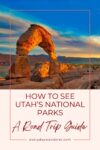
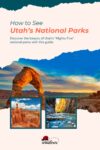
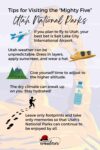

The Beehive State features breathtaking landscapes ranging from majestic mountains capped with the greatest snow on earth to rust-colored rock formations resembling Mars’s surface. And when you visit the five Utah National Parks, you’ll have the opportunity to admire it all.
With the horizon stretched like a canvas, Utah is a scenic masterpiece sculpted by red rocks and dotted with sagebrush under an endless sky. One of the best ways to admire the state’s awe-inspiring natural beauty is by escaping into the great outdoors. Here’s what you need to know about visiting the Mighty Five.
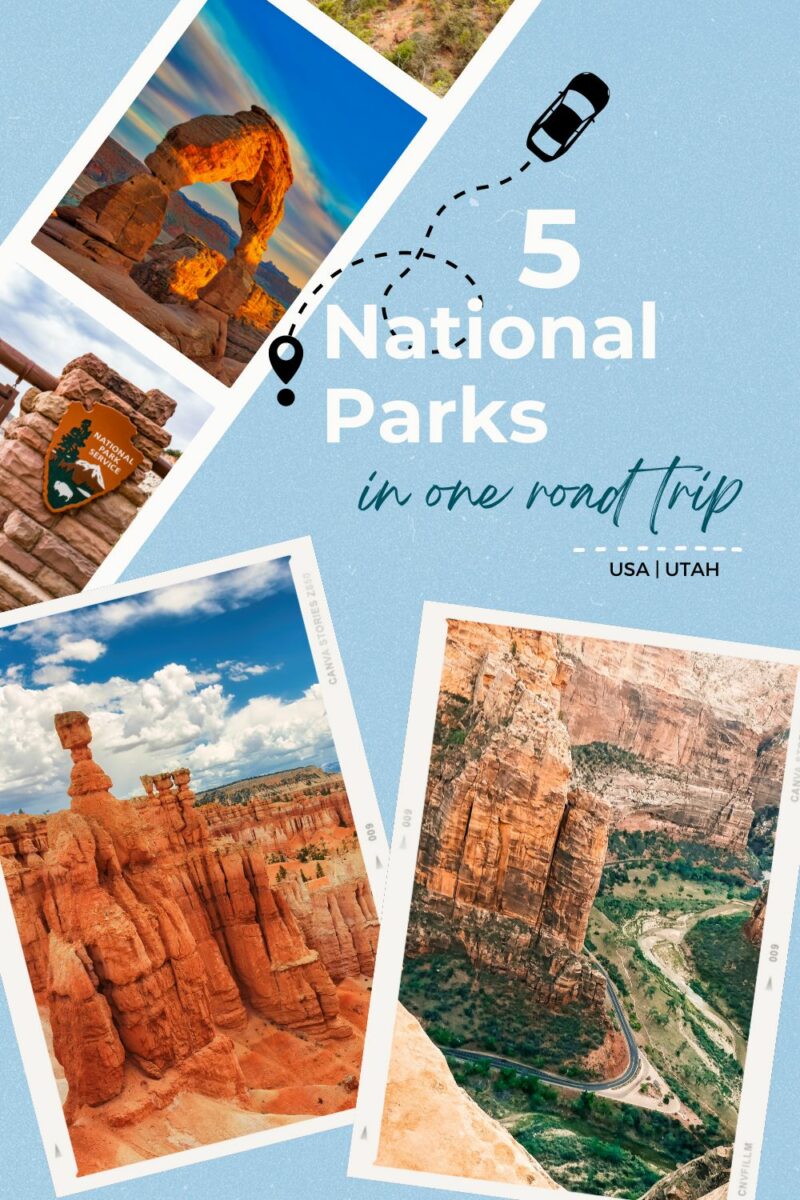
To help offset the costs of running EverydayWanderer.com, you’ll find affiliate links lightly sprinkled throughout the site. If you choose to make a purchase via one of these links, there’s no additional cost to you, but I’ll earn a teeny tiny commission. You can read all of the legal blah blah blah (as my little niece says) on the full disclosure page.
Where are the National Parks in Utah?
Utah’s national parks are tucked into Southern Utah. Because many people start their national park adventure in Salt Lake City, this guide shows you how to road trip to all five parks by traveling in a loop from Utah’s capital city.
When is the Best Time to Visit Utah’s National Parks?
My favorite time to visit is during the shoulder seasons of spring (April to May) and fall (September to October), avoiding the masses that descend on the area over summer vacation. The weather is usually mild and pleasant during these times, making outdoor activities like hiking, camping, and stargazing much more enjoyable than the extreme summer heat or winter cold.
In spring, the parks are filled with blooming wildflowers, adding more color to your scenic adventures. The temperatures are comfortable, usually ranging from the low 60s to the mid-70s.
Fall is equally wonderful, with cooler temperatures and stunning autumn colors, especially in Bryce Canyon. The crowds are thinner than the summer, which is always a plus in my book. This season also sees fewer flash floods, so exploring the parks’ lower elevations and canyons is safer.
Are Dogs Allowed in National Parks in Utah?
Bringing your furry best friend to Utah’s national parks requires some planning since each park has its own rules. Dogs are generally allowed in developed areas like campgrounds, parking lots, and paved roads. However, they are typically not permitted on trails or in backcountry areas.
For example, at Zion National Park, dogs are welcome on the Pa’rus Trail and in campgrounds but not on other trails or shuttle buses. Similarly, Bryce Canyon National Park allows dogs on paved paths like the Shared Use Path but restricts them from unpaved trails.
Arches and Canyonlands National Parks follow the same pattern: pets can accompany you in campgrounds and on paved roads but are not allowed on hiking trails. Capitol Reef National Park also permits pets in developed areas but not on trails or in wilderness zones.
If you want to explore areas where dogs aren’t allowed, businesses and vet clinics in nearby towns often offer doggie daycare, pet sitting, and overnight boarding.
Visiting Utah’s National Parks
So, let’s talk about the parks! Utah’s national parks offer some of the most breathtaking landscapes in the country, with iconic arches, gravity-defying hoodoos, and majestic cliffs. Whether you want to hike, camp, or just soak in the awe-inspiring views, here’s your guide to all five national parks in the state of Utah.

Arches National Park: A Symphony of Stone
The first stop is Arches National Park. Located about 3 ½ hours southeast of Salt Lake City and just under an hour from the Colorado border, it’s home to over 2,000 natural stone arches, including the iconic Delicate Arch. The iconic hike to the base of Delicate Arch is on a 3.2-mile round-trip trail with an elevation increase of 480 feet. But, if you’re not in the mood for the full-on hiking experience or are short on time, hit the Upper Delicate Arch Viewpoint Trail instead. It’s just a half-mile jaunt and still delivers jaw-dropping vistas of this world-renowned rock star.
But Arches National Park is more than Delicate Arch, so be sure to also visit The Fiery Furnace, a maze-like area filled with narrow passages, and Landscape Arch, an impressive arch that spans roughly the length of a football field.
“As full-time RVers, we’ve spent a lot of time in Utah, and one of our favorite campgrounds is Dead Horse Point State Park. The campground is along a canyon rim near Moab, Arches National Park, and Canyonland National Park. There are plenty of biking and hiking options everywhere you turn, and the sunsets over the canyon are incredible.”
— Rebecca Blackwell, A Little and a Lot
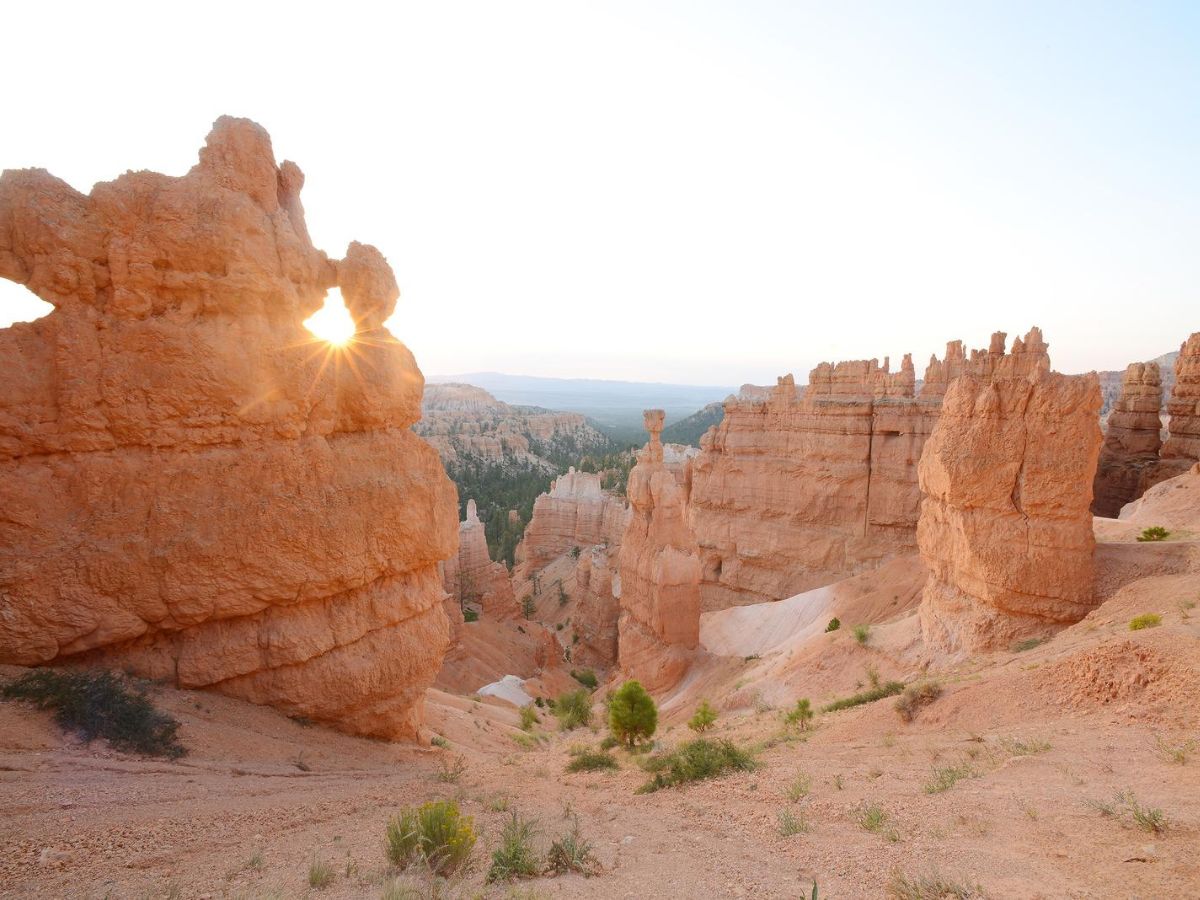
Canyonlands: The Rugged Beauty
The next stop is Canyonlands National Park. Less than an hour south of Arches National Park, it’s the largest Utah National Park, spreading across nearly 338,000 acres. Comprised of a labyrinth of buttes carved by the Colorado River, it’s like visiting the Grand Canyon but much less crowded.
One of the most incredible experiences at Canyonlands National Park is watching the sunrise through Mesa Arch. Following a relatively flat, half-mile loop trail, this popular spot allows you to watch sunbeams dance around the underside of the arch while the sun’s glow illuminates it from behind. You’ll also enjoy a wide range of beautiful hiking trails in the Islands in the Sky and the park’s Needles and Maze sections.
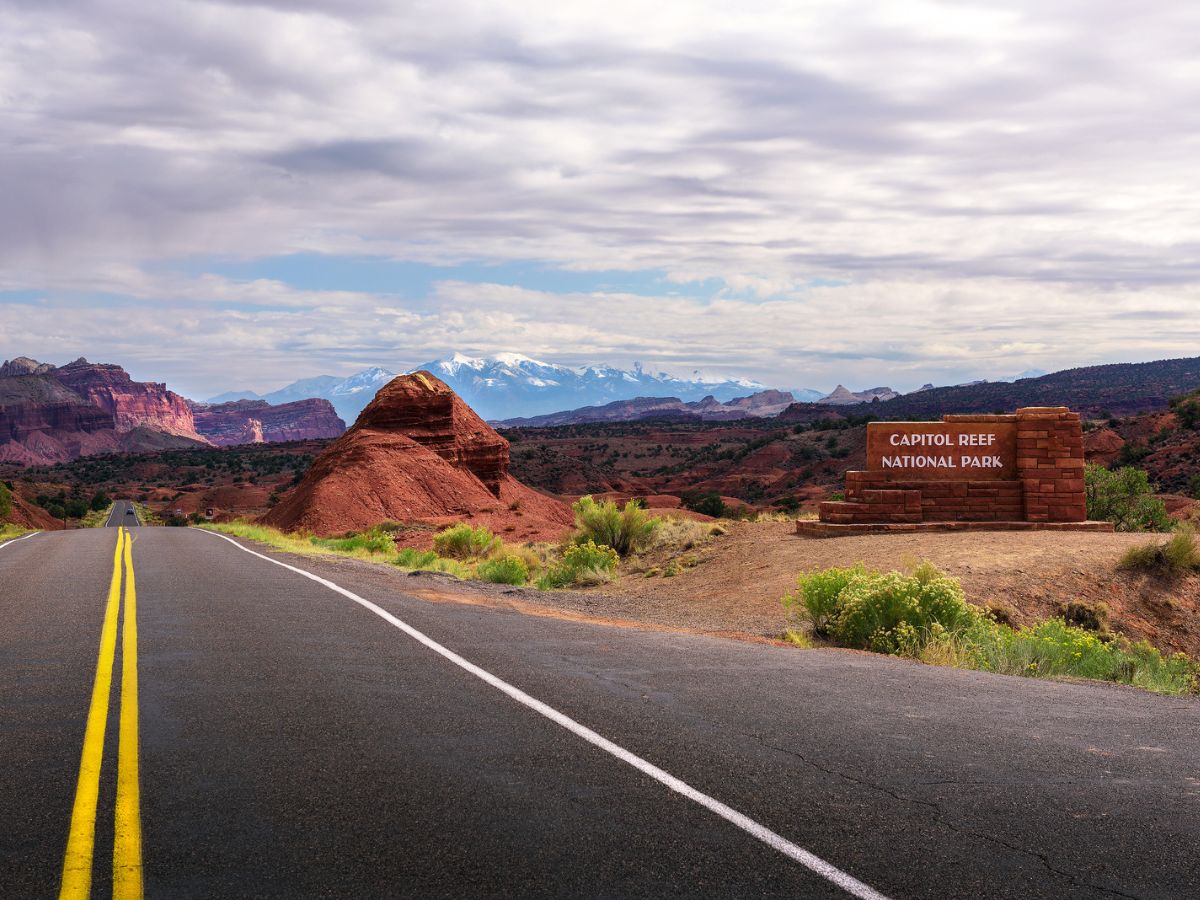
Capitol Reef: The Hidden Gem
Located at the halfway point of this five Utah National Park experience, Capitol Reef National Park is often overshadowed by its more famous siblings. However, don’t skip this unique Utah national park. Named after its most distinctive feature, it’s a hidden gem worth discovering.
So what is it? Known as the Waterpocket Fold, it’s a unique geologic monocline — a wrinkle in the earth — that stretches for nearly 100 miles. For the ultimate picture-perfect shots of this fascinating fault, hop in your car and drive the Burr Trail. Once it intersects Scenic State Route 12, prepare to be wowed. You’ll find viewpoints that offer a jaw-dropping, bird’s-eye perspective of the craggy landscape and, of course, the star of the show — the Waterpocket Fold.
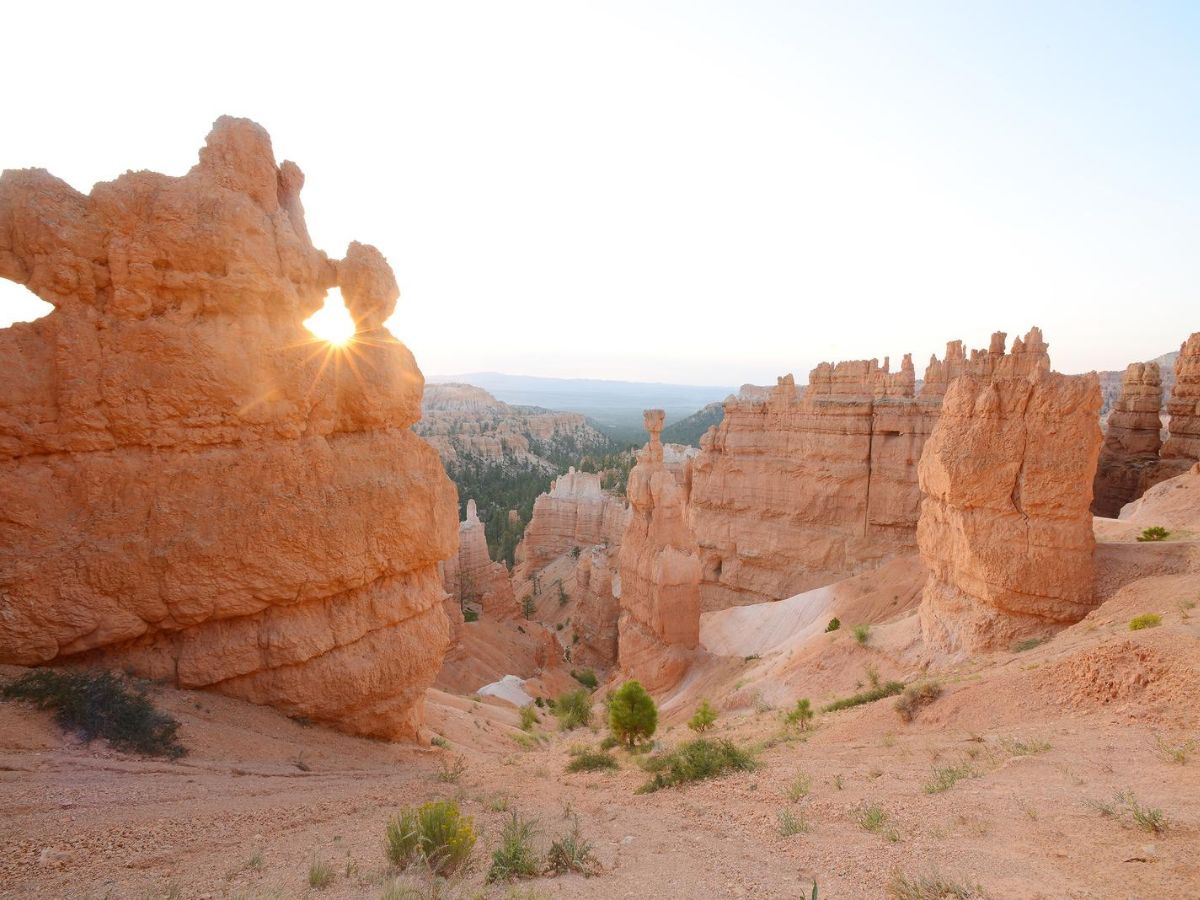
Bryce Canyon: A Hoodoo Haven
Ever heard of a hoodoo? While you can spot these unique rock columns on every continent, the largest concentration on Earth is at Bryce Canyon National Park. These spire-shaped rock formations create a surreal landscape that looks like it’s straight out of a fantasy novel. The park’s most famous viewpoint, Sunrise Point, offers a panoramic view that makes you feel like you’re on another planet. For a different perspective, take the Navajo Loop Trail down into the amphitheater and walk among the hoodoos. The experience is nothing short of magical.

Zion: The Grand Finale
Last but certainly not least, Zion National Park is the pièce de résistance of Utah’s Mighty Five. The park is best known for The Narrows, a picturesque slot canyon where you can wade through the Virgin River.
“Hiking all 16 plus miles of the Narrows in Zion is my most memorable experience in any National Park. It’s not for the faint of heart and requires a long, full day with appropriate packed supplies, but it’s a breathtaking journey to watch a small little stream unfold into the awe-inspiring canyon at the bottom.”
— Gina Matsoukas, Running to the Kitchen
If you’re up for a challenge, Angels Landing offers breathtaking views worth the strenuous hike. The spot got its name from Methodist minister Frederick Vining Fisher, who proclaimed in 1916 that only an angel could land there. If you’re looking for an easier option, the Riverside Walk is a relatively flat, 2.2-mile, paved round-trip trail that offers stunning views without the climb.
Sage Advice: When you’re ready to take a break, be sure to relax on the large lawn outside the Zion Lodge. It’s a beautiful spot for an unforgettable picnic.
On the Road Again
Traveling between these parks is an adventure in itself. The route from Arches to Zion is one of the most scenic drives in the country. Think winding roads, open skies, and the occasional roadside attraction for that perfect photo. Just remember, the journey is as important as the destination.
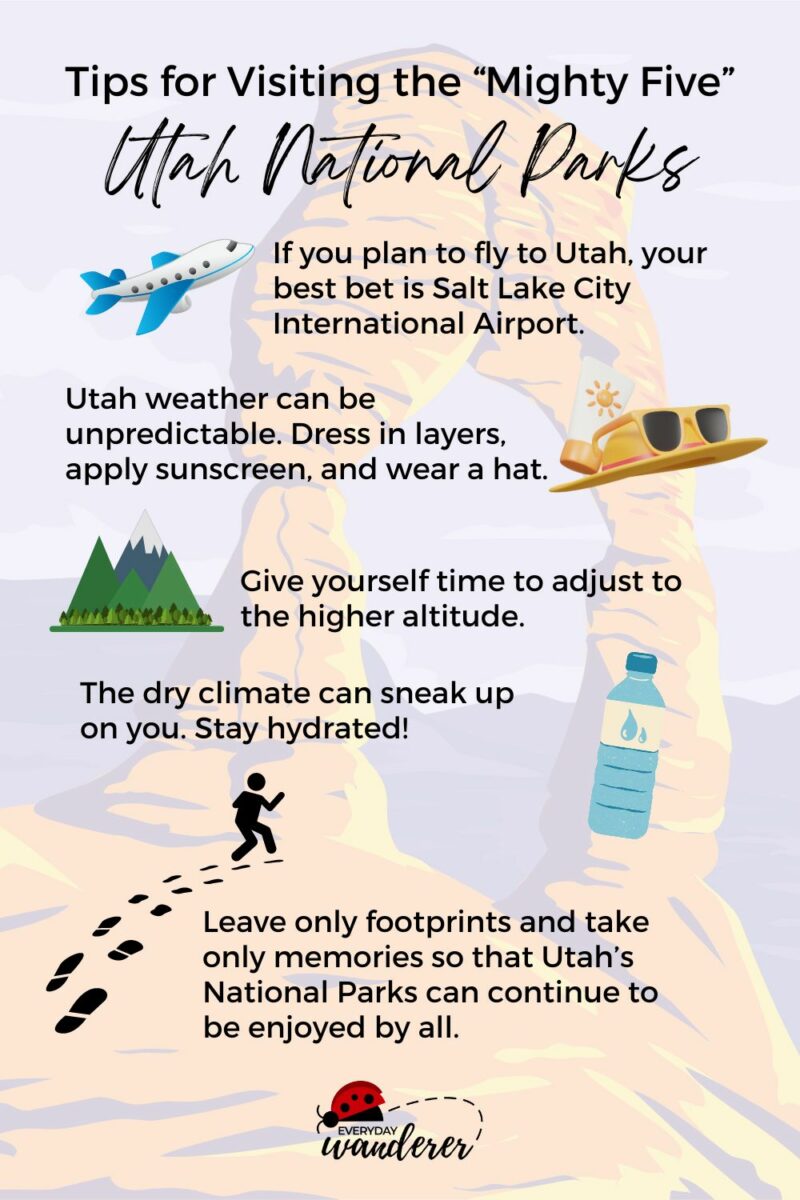
Pro Tips for Your Utah National Park Adventure
- Arriving by air: If you plan on flying to Utah, your best bet is to travel in and out of the Salt Lake City International Airport.
- Pack smart: Utah’s weather can be unpredictable. Layering is key. Also, remember sunscreen and a hat for sunny days.
- Adjusting to altitude: You can experience altitude sickness with a change in altitude of just 1,000 feet, so give yourself time to adjust.
- Stay hydrated: The dry climate can sneak up on you. Always carry plenty of water, especially on hikes.
- Leave no trace: Keep Utah national parks beautiful for generations by packing out what you pack in.
- Timing is everything: Consider visiting during spring and fall shoulder seasons for fewer crowds and milder weather.
- Out in the cold: Many of the roads, hiking trails, accommodations, and restaurants near the Utah national parks are closed during winter.
- Know your limits: These parks offer a range of activities, from easy walks to challenging backcountry routes. Choose wisely based on your fitness level.
To Visit Utah’s National Parks
Have questions about Utah’s National Parks? I’ve got you covered! Here are answers to some of the most common questions about visiting the national parks in Utah.
How many national parks are in Utah?
Utah is home to five incredible national parks, often referred to as the Mighty Five”.
What national parks are in Utah?
The Mighty Five national parks in Utah are:
- Arches National Park
- Bryce Canyon National Park
- Canyonlands National Park
- Capitol Reef National Park
- Zion National Park
Where is Zion National Park in Utah?
Zion National Park is located in the southwestern corner of Utah, near the town of Springdale. It’s roughly a 2.5-hour drive northeast of Las Vegas and about 30 minutes from St. George, Utah.
What are the best places to stay in Zion National Park?
When visiting Zion, you have several choices when picking a place to stay. Zion Lodge is a convenient option within the park, offering accommodations ranging from cozy cabins to luxurious suites.
For unique stays just outside the park consider:
- AutoCamp Zion offers a unique glamping experience with luxurious Airstream suites, modern cabins, and hybrid BaseCamps combining Airstreams and canvas tents.
- Open Sky Zion features luxurious safari-style tents with modern amenities like air conditioning, soaker tubs, and private outdoor showers.
- Zions Tiny Oasis welcomes you with all the comforts of home packed into an adorably stylish tiny space.
The nearby town of Springdale also has many top-rated accommodations with beautiful views and easy access to the park entrance, including:
How far is Zion National Park from St. George, Utah?
Zion National Park is approximately 40 miles from St. George, Utah. This translates to about a 1-hour drive, making St. George a convenient base for exploring the park.
Where is Arches National Park located in Utah?
You’ll find Arches National Park in eastern Utah, just outside the town of Moab. It’s about a 3.5-hour drive southeast of Salt Lake City and less than an hour’s drive west of the Colorado border.
Utah’s National Parks are not just a destination; they’re an experience that will leave you with a newfound appreciation for the natural world. Are you ready to hit the road?
Have You Visited Any of the National Parks in Utah?
If so, I’d love to hear all about your adventures! What did you like most? Do you have any additional tips or hidden gems to share? Drop your experiences and suggestions in the comments section below!
Portions of this article originally appeared on Food Drink Life.
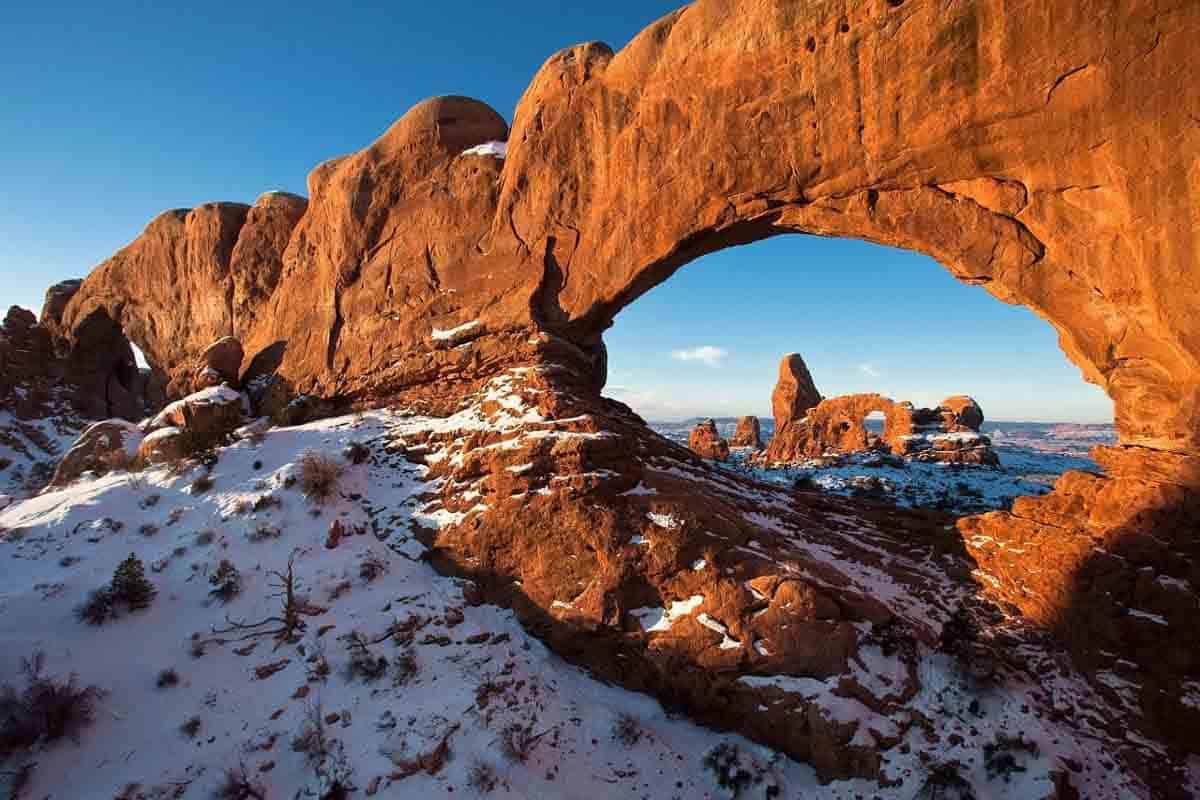
Looking for more information to plan your Utah vacation? Check out my additional recommendations to help you plan your trip to Utah including the best Utah vacation spots, what to see and do in Utah, the best places to stay in Utah, where to eat in Utah, and more!
Ready to Go?
Use These Helpful Links to Book Your Trip!
- Find low fares with airfarewatchdog and Skyscanner
- Book your plane ticket with Expedia or Kayak
- Or take the scenic route on an epic road trip in a rental car or an RV from Outdoorsy
- From hotels to private homes, find the perfect accommodation with Hotels.com or Vrbo
- Travel in style with a suitcase, carry-on, backpack, or handbag from eBags
- Save on tickets to attractions, sightseeing tours, and more with CityPASS, Tiqets, and Viator
- Don’t leave home without travel insurance from AXA
- Discover the sights, history, and culture of your destination with an interactive scavenger hunt
- Need something else to plan your perfect trip? Visit my travel resources page for more trusted partners. Happy wandering!
Sage Scott
Thank you for sharing!




After reading your guide, I was able to visit a couple of the Utah National Parks that you had suggested. Thank you for this useful information!
I’m so glad!
I’ve visited Arches, Bryce, and Zion. And now I really need to see Capitol Reef!
Oooooh, yes, you do!